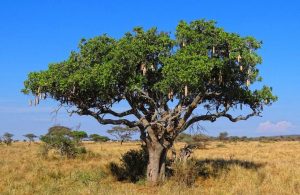Lavender is an aromatic plant with a very pleasant and soothing scent. It has numerous species and one of these species is Lavandula dentata which belongs to the plant family, Lamiaceae.
It is an evergreen woody shrub growing up to 1m tall, with pale green, narrow linear leaves, violet blue flowers and more traditional grey leaves with serrated edges. It is a large, fast growing shrub that is sometimes referred to as ever blooming lavender.
Lavender is legendary among herbs as a healer, and many of its historic uses have proven to be legitimate. Herbalists regard lavender as the most useful and versatile essential oil for therapeutic purposes. In fact, the essential oil has been utilized over the years for a number of medicinal purposes and is known to possess analgesic, anti-convulsive, anti-depressant, anti-phlogistic, anti-rheumatic, antiseptic, antispasmodic, antiviral, bactericide, carminative, cholagogue, cicatrisant, cordial, cytophylactic, decongestant, deodorant and diuretic activities.
The essential oil from lavender is applied to burns and also has a healing effect on scabies and other skin rashes. The oil has some wonderful properties that help with wound healing. When applied to a wound, it promotes healing by enabling it to contract and speeds up the process of tissue repair. The oil also has antiseptic and analgesic properties which ease the pain of a burn and prevents infection. It has cytophylactic properties that promote rapid healing and helps reduce scarring. The scent of lavender plant has a calming effect on the body and it can be used to reduce anxiety, stress and promote sleep. In fact, lavender oil is probably best known for its calming or sleep inducing effects.
The lavender essential oil can be used as an antimicrobial, antiviral and also a fungicide. It was used in wartime for antiseptic purposes, because when the oil was rubbed into a wound, the infection rate significantly dropped. Many people have used it over the centuries as a headache remedy, and it is also popular in aromatherapy as a tension reliever. In this case, the lavender essential oil is inhaled to cause the desired effects.
One of the very first uses for this versatile herb was for flavouring food. It is pleasant in desserts and also in savoury dishes. It lends a delightful contrast to fruits that are sour. However, it is not recommended to use the pure distilled essential oil in food dishes, but flower buds to give the right amount of diluted essence to the dish. Lavender has been used for restlessness, insomnia, anxiety, diabetes and perinea discomfort after childbirth. However, there are limited clinical trials to support any therapeutic use for lavender.
Lavender can be planted in gardens or made into oil and applied to the skin or mixed with other oils to keep mosquitoes away. In fact, it’s believed that lavender scent is discomforting to mosquitoes and hinders a mosquito’s ability to smell! Additionally, lavender repels other insects too, including fleas and moths. Lavender can thence protect nearby plants from insects such as whitefly, while lavender planted under and near fruit trees can deter codling moth. Likewise, dried sprigs of lavender leaf extract repel moths.
(Richard Komakech)






